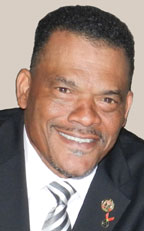“It’s amazing how gentrification affects our neighborhoods, causing us to always be the last ones to know that things are changing. We are the ill-gotten sum of the equation and not the beneficiaries to the dividends. We are the regretted byproduct of waste removal, in the ‘other’s’ eyesight. The author, Son of Baldwin, has made 11 prudent statements that are facts related to gentrification, to which I agree and his 12th point is “point on”. Bobby R. Henry, Sr., Publisher
From Son of Baldwin
This is how I witness/witnessed gentrification happening in my neighborhood in Brooklyn.
- Local, state, and federal governments ignore mostly Black and brown neighborhoods of poor and working class people, except as sites of experimentation (projects), city/state fundraising (through fines, the flooding of drugs into these neighborhoods to finance global military initiatives), and the locking up of these residents for the expressed purpose of free labor (slavery).
- These residents seek out a meager existence, creating their own economies (off-the-books hair salons, barbershops, candy stores, and restaurants inside residences) to give their families better odds at surviving. This allows their children access to affordable higher education.
- After graduation, these now-grown children return to their neighborhoods with ideas on how to revitalize them in the face of municipal neglect, and begin to open up innovative small businesses, get elected to local government positions, and lead grassroots community outreach and revitalization programs to make the neighborhood more livable for its residents. Leading the charge for these visionary projects are usually Black queer people/women.
- The white people these college graduates met in school, and have befriended, visit these Black /brown college graduates from these neighborhoods-in-revitalization-progress and are “impressed” that these neighborhoods aren’t the crack-infected, crime-ridden jungles that they saw in the art-house film/documentary their missionary cousin from Montana made. And they are even more impressed at the low-cost of renting or buying in the neighborhood. So, pretending to be oblivious to the economic consequences of moving into this neighborhood, pre-tending not to know that their very own bodies carry with them the infection of racism, like a smallpox blanket, via a racist sys-tem that deems wherever they live to be of inherently greater value than wherever a Black/brown person lives, the white people white. Which is to say that they Columbus.
- Noticing these shifts and trends, local landlords who own blighted properties in the neighborhood suddenly see the “potential” and begin investing in remodeling burnt-out or otherwise dilapidated buildings and empty lots. Once completed, they price these constructions so highly that only the new white folks could afford them, and they purposely overcharge any Black or brown people seeking residence to dissuade them from renting/purchasing.
- The city and realtors notice the shifts as well. Suddenly, infrastructure starts getting repaired, trees and flowers are planted, new stoplights and traffic signs are installed, police begin to do their jobs, mass transit begins to actually service the community. And the realtors begin to get creative. To distance the neighborhood from its Black/brown reality, and attract more white folks, they come up with new names for the neighborhood, usually by adding “New”, “Upper,” “East,” “West,” “Heights,” or “Hills” as a prefix or suffix. Or by shortening the name to some trendy two-syllable, one-word like “WhiteSu.”
- Smelling blood, vultures begin descending on the neighborhood, seeking out Black/brown property owners who either can no longer afford the new raised property taxes or who aren’t educated about the value of their property as a means to pass down generational wealth, offering large sums of cash to buy them out. Enough residents are desperate enough to take the money, even when it’s below the actual value of their properties, and these vultures then flip the property and charge 10 times the cash they paid for it.
- The new white residents tell their family and friends, who tell their families and friends, who tell their families and friends, about their neighborhood in transition, fully aware that they are the transition. Sometimes, they pretend to feel a bit of guilt about it.
- Some of these new white residents are adversarial to or afraid of the Black/brown residents because they know that what they’re doing is (*explicit f**k) up and the very presence of the Black/brown people reminds them of how (*explicit f**k) up they are. They’ll begin to call the police on their Black/brown neighbors when those neighbors continue the normal cultural practices that have been in effect long before the new white residents had ever imagined living there. And some of these new white residents try to fit their square behinds into a round hole in ways that could only come off as patronizing and never actually address the stench of white supremacy on them, their complicity and collusion with the system in play, and how it is ravaging a community—no matter how pretty it looks and irrespective of their intentions.
- Inspired by their Black college friends, some of the new white residents begin opening up small businesses too, like stores that sell organic beeswax, farm-raised goat-jelly, artisanal bike locks, and other things that no Black/brown resident ever wanted or needed. They begin painting up the neighborhood in the graffiti that is considered “art” when they do it, but was considered vandalism when the Black/brown people did it.
- Increasingly, the Black/brown residents are priced out of a neighborhood that was once their own; a neighborhood that no one, except them, saw the potential and value in until a white person came along and “innocently” investigated and deemed it “habitable.” So these Black/brown residents are forced to move. Sometimes, they stay in the city, moving to areas that the government considers “bad neighborhoods.” Other times, they move West or South to other states where those governments have purposely ignored or neglected particular regions because it despises its current population.
- Then, the gentrification process begins all over again.



Be the first to comment